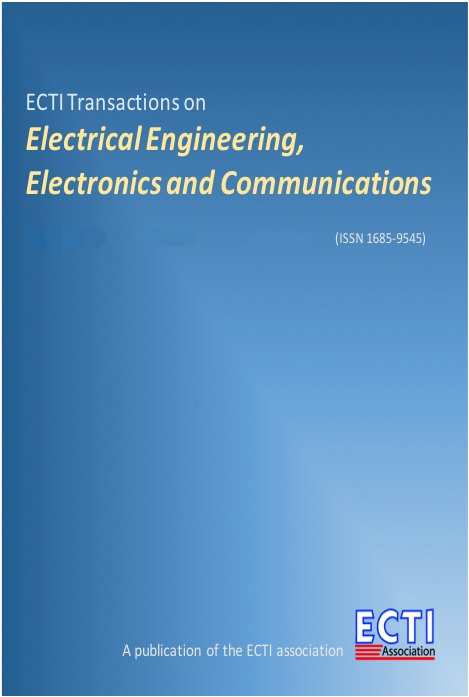Three-Phase Inverter with Direct Torque Control for a Brushless DC Motor
Main Article Content
Abstract
This paper presents the implementation of a three-leg voltage source inverter fed by a brushless DC motor. The open-loop speed control with direct torque is employed in this motor. The rotation of the motor is controlled by using an optimal voltage vector which is related to the calculation of stator flux and electromechanical torque. The experimental results show that this system has greater capability to reduce spike and ripple on the voltage, current, stator flux, and electromechanical torque than the conventional speed controller which feeds the voltage vector from the hall-effect sensors.
Article Details

This work is licensed under a Creative Commons Attribution-NonCommercial-NoDerivatives 4.0 International License.
This journal provides immediate open access to its content on the principle that making research freely available to the public supports a greater global exchange of knowledge.
- Creative Commons Copyright License
The journal allows readers to download and share all published articles as long as they properly cite such articles; however, they cannot change them or use them commercially. This is classified as CC BY-NC-ND for the creative commons license.
- Retention of Copyright and Publishing Rights
The journal allows the authors of the published articles to hold copyrights and publishing rights without restrictions.
References
A. F. N. Azam, A. Jidin, N. A. Ngatiman, M. Jopri, M. Manap, A. L. Herlino, and N. F. Alias, “Current control of BLDC drives for EV application,” in 2013 IEEE 7th International Power Engineering and Optimization Conference (PEOCO), Langkawi, Malaysia, 2013, pp. 411–416.
K. Kamalapathi, P. V. Kumar, and C. Balaji, “Torque control of BLDC motor drive using MATLAB/SIMULINK,” International Journal of Emerging Trends in Engineering Research, vol. 3, no. 6, pp. 448–452, 2015.
H. F. Prasetyo, A. S. Rohman, F. I. Hariadi, and H. Hindersah, “Controls of BLDC motors in electric vehicle testing simulator,” in 2016 6th International Conference on System Engineering and Technology (ICSET), Bandung, Indonesia, 2016, pp. 173–178.
I. Takahashi and T. Noguchi, “A new quick-response and high-efficiency control strategy of an induction motor,” IEEE Transactions on Industry Applications, vol. IA-22, no. 5, pp. 820–827, Sep./Oct. 1986.
I. Takahashi and Y. Ohmori, “High-performance direct torque control of an induction motor,” IEEE Transactions on Industry Applications, vol. 25, no. 2, pp. 257–264, Mar./Apr. 1989.
M. Depenbrock, “Direct self-control (DSC) of inverter-fed induction machine,” IEEE Transactions on Power Electronics, vol. 3, no. 4, pp. 420–429, Oct. 1988.
D. Casadei, F. Profumo, G. Serra, and A. Tani, “FOC and DTC: two viable schemes for induction motors torque control,” IEEE Transactions on Power Electronics, vol. 17, no. 5, pp. 779–787, Sep. 2002.
Y. Chapuis, D. Roye, and J. Davoine, “Principles and implementation of direct torque control by stator flux orientation of an induction motor,” in Proceedings of 1995 IEEE Applied Power Electronics Conference and Exposition (APEC’95), 1995, pp. 185–191.


